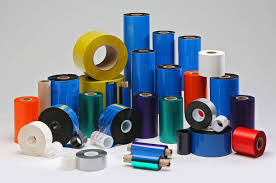Introduction
In the world of printing, technology keeps evolving. One of the most talked-about printing techniques in recent years is UV printing. If you’ve heard about it but aren’t quite sure what it means or why it’s important, you’re in the right place. This blog explains guide to UV printing in the simplest way possible. No jargon, no complicated terms — just a clear guide to help you understand how it works, what makes it different, and why so many businesses are switching to it.
What Is UV Printing?
UV printing stands for “ultraviolet printing.” It’s a type of digital printing that uses ultraviolet light to dry or cure the ink as it’s being printed. Unlike traditional printing methods where the ink takes time to dry or needs to soak into the material, UV printing dries the ink instantly using UV light. This method is especially popular in high-quality product areas like business card printing Dubai, where sharp details and fast turnaround matter.
How Does It Work?
Here’s the basic idea:
- The printer applies a special type of ink onto the surface.
- Right after the ink is laid down, a UV light follows and instantly cures (dries) the ink.
- This creates a smooth, durable print that stays on the surface instead of soaking in.
It works on many surfaces like plastic, glass, wood, metal, acrylic, and even fabric. This is one of the biggest advantages of UV printing.
What Makes UV Printing Different?
UV printing is not just a new version of old methods. It’s something very different in a few key ways:
1. Instant Drying
The UV light cures the ink immediately. This means you don’t have to wait for the print to dry or worry about smudging.
2. Works on Almost Any Material
You’re not limited to paper. You can print on items like phone cases, mugs, signage boards, leather products, and more. This flexibility is one reason printing Dubai businesses often use UV printing for a wide range of custom products.
3. High-Quality Finish
The cured ink stays on top of the material, which means you get vibrant colours, crisp details, and a slightly raised texture that feels premium.
4. Eco-Friendly
UV inks are free of solvents. That means fewer chemicals are released into the air during printing, which makes it better for the environment compared to traditional methods.
Components of a UV Printer
To understand UV printing better, let’s break down the main parts of a UV printer:
1. Print Heads
These are responsible for spraying the ink onto the surface. They work similarly to inkjet printers but with UV-compatible inks.
2. UV Lamps
These are placed near the print heads. Their job is to cure the ink instantly as it’s printed.
3. UV Inks
This is not your usual ink. UV inks are designed to react to ultraviolet light and dry almost instantly. They are thicker and stick well to various surfaces.
4. Print Bed or Conveyor
Depending on the machine type, this part holds or moves the material being printed. Flatbed UV printers are used for rigid items, while roll-to-roll UV printers handle flexible materials.
Types of UV Printers
UV printers come in different shapes and sizes, depending on what you want to print:
1. Flatbed UV Printers
These are ideal for printing on flat and rigid items like wood panels, metal sheets, glass, and acrylic.
2. Roll-to-Roll UV Printers
Used for banners, vinyl, and other flexible materials that come in rolls. These are popular in signage and large-format printing.
3. Hybrid UV Printers
These can handle both rigid and flexible materials. A good choice for businesses that want versatility.
Also Read: How Can Law Firms Benefit from Document Digitization?
Applications of UV Printing
One of the main reasons UV printing is gaining popularity is because of its wide range of uses. Here are some areas where it shines:
1. Advertising & Signage
Billboards, backlit boards, indoor signs, and outdoor displays all benefit from UV printing because of its bright colours and weather resistance.
2. Packaging
UV printing is great for custom boxes, labels, and product packaging, especially when companies want a high-end look.
3. Home Decor
You can use UV printing to create custom wall panels, canvas prints, decorative items, and furniture designs.
4. Promotional Products
Items like keychains, pens, USB drives, and power banks can be printed quickly and cleanly using UV technology.
5. Personalized Gifts
Phone cases, mugs, photo frames, and trophies can be customized easily with names, photos, or logos.
Why UV Printing Matters
UV printing isn’t just a fancy method. It solves real-world problems and improves many areas of business and design. Here’s why it matters:
1. Fast Turnaround
Since the ink dries immediately, you can complete more jobs in less time. This helps meet tight deadlines.
2. Durable Prints
UV prints are resistant to scratches, fading, and water. That means the final product lasts longer.
3. Sharp Details
Because the ink doesn’t spread or soak in, you get sharp edges and fine details — perfect for logos, small fonts, and photos.
4. No Need for Coating
Traditional prints often need an extra protective coating. With UV, the cured ink acts as its own sealant.
5. Customization at Scale
You can print one piece or a hundred with the same level of detail. Great for small businesses or one-off custom orders.
Challenges of UV Printing
While UV printing offers many benefits, it’s not without its downsides. Here are a few challenges to be aware of:
1. Equipment Cost
UV printers and inks are more expensive than regular printers. This can be a barrier for small businesses.
2. Material Compatibility
Not all surfaces work well. Some items may need a coating or primer to help the ink stick properly.
3. Maintenance
UV machines need regular cleaning and maintenance to keep the print quality consistent.
4. Learning Curve
Understanding the right settings for different materials takes some practice.
Tips for Getting the Best UV Prints
If you’re planning to use UV printing for your business or projects, here are some simple tips to get the best results:
- Test Before Bulk Printing: Always print a sample first, especially if it’s a new material.
- Keep Your Equipment Clean: Dust or ink buildup can ruin print quality.
- Use High-Resolution Designs: The better the design file, the better the final print.
- Work with Trained Operators: Experienced printers know how to adjust settings for different jobs.
Future of UV Printing
UV printing is still evolving. With new ink formulas, better machines, and growing demand for custom products, it’s likely to become even more common. We may also see UV printing combined with other techniques, like 3D printing, for more creative outputs.
As more industries look for fast, flexible, and eco-friendly printing solutions, UV printing is set to play a big role in the future of design, marketing, and manufacturing.
Conclusion
UV printing offers a smart, flexible way to print high-quality designs on almost any surface. Whether you’re running a printing business, working in design, or just curious about new technology, UV printing is worth knowing about. It’s fast, clean, long-lasting, and opens up a world of creative options. While it does come with some learning and setup costs, the benefits often outweigh the drawbacks. In a world where customization and speed are key, UV printing is here to stay.
If you’re considering adding UV printing to your work or business, now is a good time to explore it deeper. The technology is solid, the results are impressive, and the demand is only going up.
Also Read: How Small Businesses Can Leverage App Development for Strategic Growth





